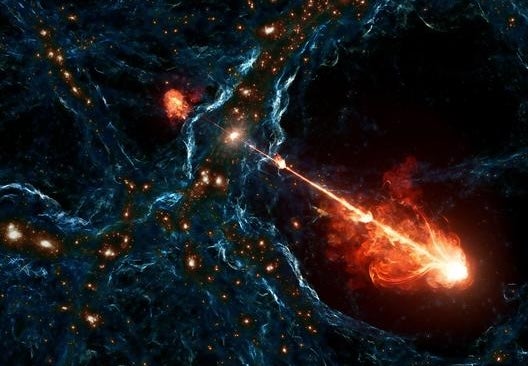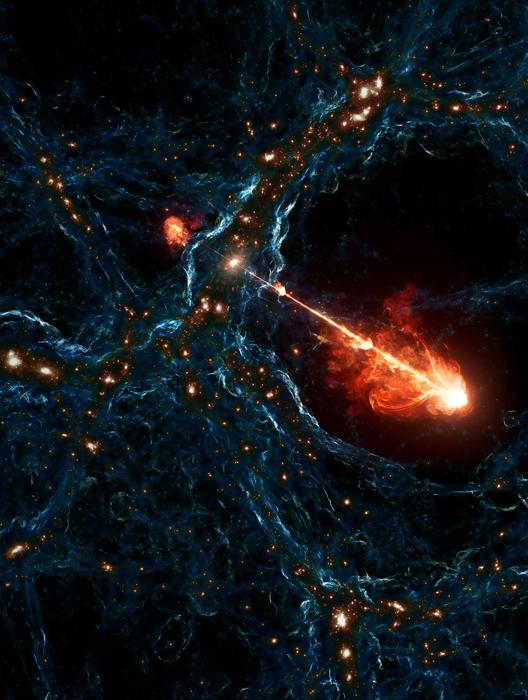Astronomers find the biggest black hole jets ever – and they are astonishingly vast

Scientists have found the biggest pair of black hole jets ever seen.
The two stretch 23 million light-years long across the universe. That is roughly as long as 140 of our own Milky Way galaxy stacked on top of each other.
Such jets are vast blasts of radiation and particles that erupt out of supermassive black holes. They can last for millions of years, reshaping the cosmos as they change how matter flows through space, blowing with a total output equivalent to trillions of suns.
Milky Way jets are the largest galaxy-made structures in the universe. But the two newly found are even bigger than we had ever seen before – previous observations had suggested they could only grow to around 16 million light years in size.

The previous record holder was a jet system called Alcyoneus. It was found in 2022 by the same team, but was only around 100 milky ways in length.
Astronomers have named the jets Porphyrion, after a giant from Greek mythology. They were spotted far enough away that the universe was only 6.3 billion years old – less than half its present age.
The same research also suggests there might be many more such megastructures waiting to be found. In all, scientists have found more than 10,000 of them already.
“When we first found the giant jets, we were quite surprised,” says Martijn Oei, the lead author on the new paper. “We had no idea that there were this many.”
And it seems to indicate that the jet systems might help form galaxies in ways we had not realised. Porphyrion was around during an earlier part of the universe, when the connections between galaxies were less distant than they are today, meaning that it reached across an even larger spread of the “cosmic web”.
“Astronomers believe that galaxies and their central black holes co-evolve, and one key aspect of this is that jets can spread huge amounts of energy that affect the growth of their host galaxies and other galaxies near them,” said co-author George Djorgovski, professor of astronomy and data science at Caltech. “This discovery shows that their effects can extend much farther out than we thought.”
The findings are reported in a new paper, ‘Black hole jets on the scale of the cosmic web’, published in the journal Nature.
Join our commenting forum
Join thought-provoking conversations, follow other Independent readers and see their replies
Comments
Bookmark popover
Removed from bookmarks